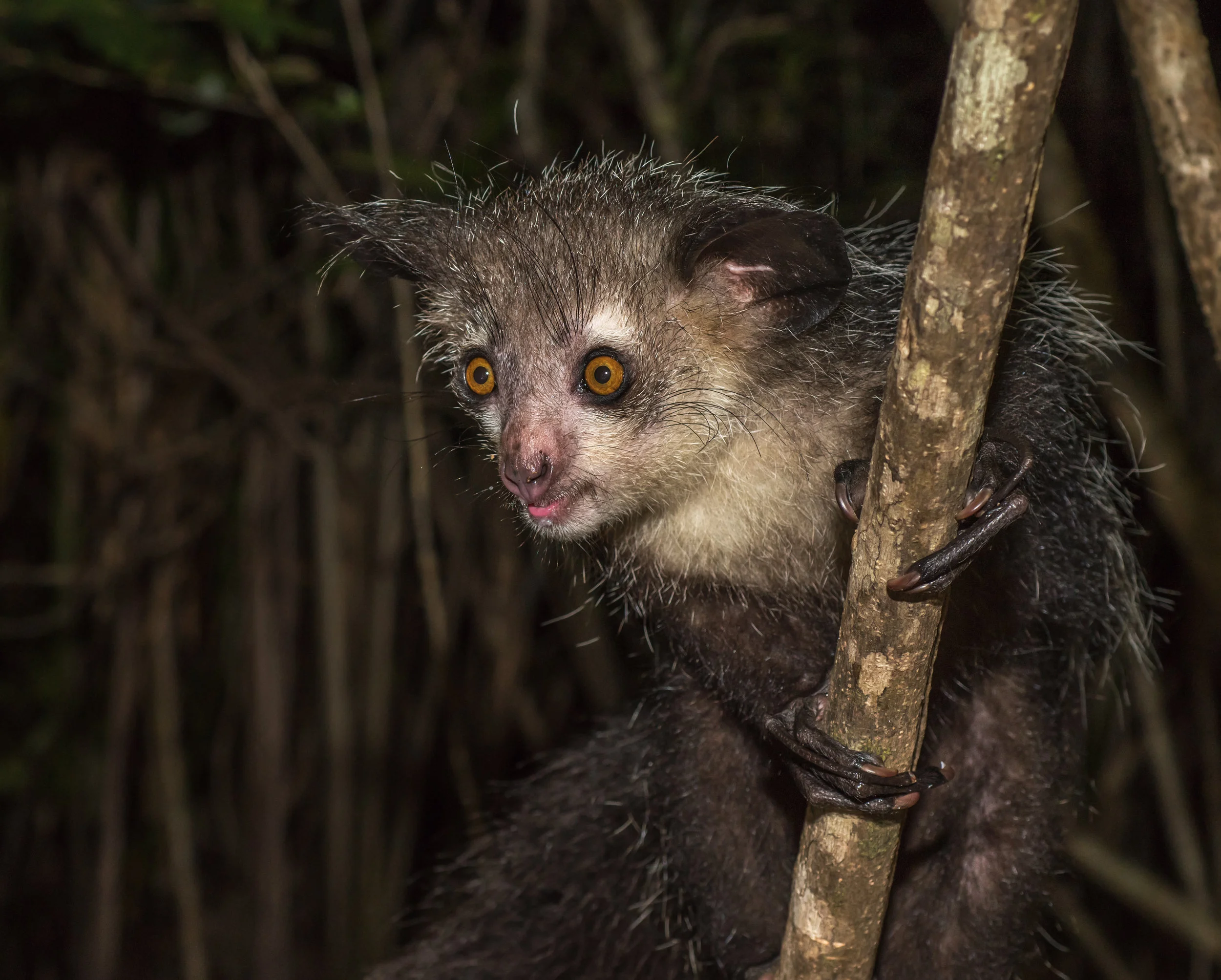Aye-Aye Lemur
"Thousand Yard Stare" by J.A.W. Cooper (color pencil, graphite and digital)
“I love Aye-Ayes because their expressive faces are simultaneously comical and unsettling, and those fingers are to die for!”
Your purchase is helping Expedition Art and Saving Species purchase land in Sumatra! Learn more about the project.
Habitat
The Aye-aye lemur is found only on the island of Madagascar. Even though sightings of this creature are very rare, populations are assumed to be distributed along the coasts and throughout the island, with the exception of the southern desert. The Aye-aye is highly adaptable to a wide variety of climates but prefers the rainforest with its dense tree cover. Populations have also been introduced off the coast of northeastern Madagascar on two small islands.
Family Life
The Aye-aye is nocturnal and many of its most distinctive features have been adapted to serve this lifestyle. It spends most of its life in trees, making it difficult to catch sight of them and even more difficult to accurately assess their current population size. The female is dominant and will not share its territory with other females, though males can have overlapping territories with other males and multiple females. After a gestation period of around five months, a single offspring is born; two or three years pass before giving birth again. Infant Aye-ayes are highly dependent on their mothers for an extended period of time.
Lifespan
The Aye-aye lemur has a life expectancy of 20 years in the wild and 23 years in captivity.
Hunting Habits/Diet
The Aye-aye is an omnivore that eats a wide variety of nuts, fruits, seeds, herbs and insects/larvae. Males can cover extremely long distances to search for food. One of their preferred foods is the interior of ramy nuts and they are found often in areas where ramy nuts are abundant. They also occasionally raid coconut plantations.
Population
The current size of the Aye-aye population is unknown but is known to be decreasing considerably.
Fun Fact
Originally classified as a rodent, Aye-aye lemurs are now recognized as the world’s largest (and most bizarre) nocturnal primate. Occurring only on the African island of Madagascar, their strange, somewhat off-putting appearance has resulted in the belief of some island tribes that they are an evil omen. They use echolocation when searching for food, tapping their long middle fingers against trees to find the location of insects, much like woodpeckers.
Why are they endangered?
Habitat loss poses a large threat to the remaining population of Aye-aye lemurs; trees that serve as dietary staples for the Aye-aye are also favored by the locals for construction and lumber. When wild food sources are scarce and they raid plantations, they are often killed as crop-pests. They are also subject to the superstitions of some native tribes who believe they are a bad omen; these villagers will kill an Aye-aye lemur on sight in order to avoid imparting bad luck on their village.
Status
Endangered


